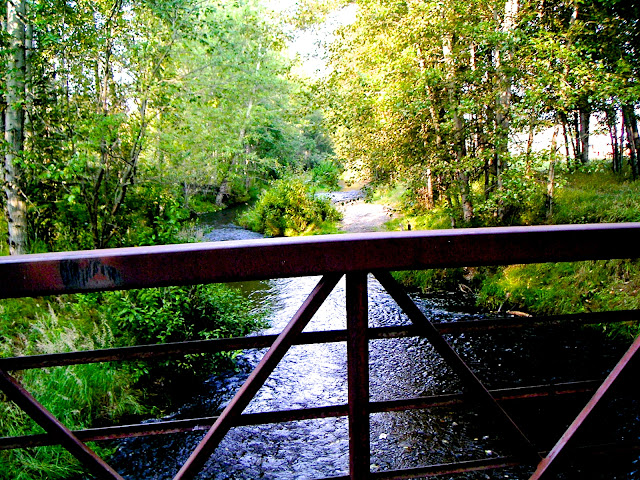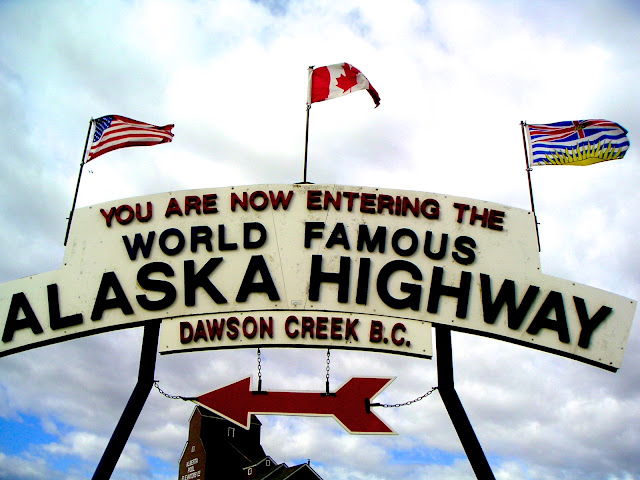The Alaska Railroad is a working railroad, with tourism and passenger service only a part of its revenue, and freight being its main revenue source. It runs north from Mile 0 in Seward to Anchorage at Mile 114, Denali National Park at Mile 347, and ends at Mile 470 in Fairbanks, with spurs to Whittier, Palmer, and Eielson Base. It is also one of America's last flag stop trains, allowing passengers to get on and off anywhere along the 55 mile wilderness stretch between Talkeetna and Hurricane to hike, fish, camp, or reach a remote cabin.
Construction of the railroad took eight years and was completed by the federal government in 1923. The State of Alaska bought it from the federal government in 1985.
The photo below was taken from the train window as we followed Turnagain Arm south from Anchorage. The tracks used to be up against the mountainside, but frequent avalanches necessitated the relocation of the tracks and highway closer to the water.
I rode the train for one of is numerous excursions -- rafting Spencer Glacier and the Placer River. We first rode to the town of Whittier, and we then re-boarded the train and traveled to the Portage area where we had a short bus ride to the raft launch. The raft trip ended back at the train as seen below.
This shot was also taken from the train and shows Dall sheep on the mountainside above the tracks and highway. One of the largest users of the train are the cruise ships which arrive in Whittier or Seward and then put their passengers onto the train for transit to Anchorage, Denali, Fairbanks, and elsewhere.
Along the train tracks, we passed the "Ghost Forest," created by the devastating 1964 earthquake. Before the quake, this land was above sea level and the forest thrived, but the quake caused the land to sink eight feet, the sea inundated the area, and it became a salt marsh, and since salt is a preservative, the trees remain petrified -- intact, supported by the three feet of silt deposits left by the surge tide. The ocean is a mere 100 feet away on the other side of the tracks. I also saw this area again as I biked the Girdwood Bike Trail.




















































